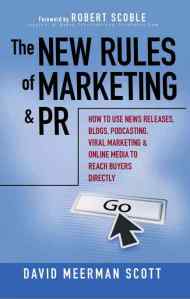Most of my blog entries have been about marketing and driving traffic to your sites. Clearly the topic of conversion requires lots of in-depth discussion. But here, as succinctly as I can, is a laundry list of the top 10 no-brainer audits that you should do on your site to keep people from abandoning the cart and leaving before they buy. Look at your site, and think about these challenges. It’s a shame to lose a customer after all that you invest in bringing them there!
1: Pay attention to design
Once they’re on your home page or in your store, design and usability are crucial! Not only must your site be attractive, but calls to action need to be obvious (or more than obvious if possible), so visitors:
- See your site as credible
- Understand your offerings
- Know how to buy
- Can see where to click
- Are not overwhelmed with too many choices on the home page or any sub-page.
2: Don’t ask for too much information too quickly.
Some people would love to be on your mailing list, others just want to buy. Don’t require registration. It should be just an option after they checkout. Don’t worry, you can always email them and ask them to register later. Offer some value, even if it’s just discount offers or a chance to win a prize, to get them on your list.
3: Write for humans.
Yes, you need to have SEO terms for our friends at Google. But first and foremost, the customer who visits needs to understand what you are talking about. Good content first, SEO optimization second.
4: Fill your categories with product, and remove items when they are out of stock
 No one wants to look at a category page with less than 5 items. Keep your category pages broad enough to include 10-30 items. And unless you are the only seller of an item, if it’s out of stock remove it! Sell them something you have. Otherwise they will just go find that out of stock item somewhere else, thanks to your excellent merchandising.
No one wants to look at a category page with less than 5 items. Keep your category pages broad enough to include 10-30 items. And unless you are the only seller of an item, if it’s out of stock remove it! Sell them something you have. Otherwise they will just go find that out of stock item somewhere else, thanks to your excellent merchandising.
5: Save cross marketing and recommendations until after the cart entry.
Keep the sales goal in mind. Get the first item sale into the cart before you send the customer off looking at accessories. Otherwise, you might lose the whole sale!
6: Keep the checkout simple.
Cut out unnecessary questions. Eliminate the VISA/MC/AMEX question, you can figure out what kind of credit card they’re using from the number. Consider filling in the town/city from the zip code. Remember me (if I opt-in) for my next order. If you asked my zipcode for shipping, don’t ask again at checkout. And avoid Captcha image phrases, unless you enjoy frustrating your customers.
7: Explain shipping time and shipping cost up front.
If the customer needs to pay shipping, tell them how much, and how long shipping will take, right up front. Don’t make them click around to find the choices, and certainly avoid surprising them at that end, unless the surprise can be a lowered cost. (It never hurts to delight the customer).
8: Make it easy to contact you.
Don’t hide your contact information, offer a number, email, chat, and any other means for them to talk to a person and get answers quickly – ideally while they are still shopping!
9: Offer customer reviews, and don’t be afraid of negative ones.
Customers appreciate both the positive and negative reviews. Don’t be afraid of the bad ones, and don’t edit them out (other than the occasional angry ranter and raver). If the reviewer’s concerns resonate with the buyer, better we all find out now. Returns that could have been avoided eat into profit, and don’t build loyalty.
10: Make sure your product search tool is refreshed often and effective:
If someone is searching for an item, and you have it, it’s an absolute sin to turn them away. Implement a search tool that pre-fills, accepts miss-spellings, and is as effective as possible in finding the customer what they need.
This list is far from all-inclusive. But if you start here, I guarantee you can increase conversions, customer satisfaction, and a better return on the investments you keep making to bring new customers to your site.




 Posted by theecomexpert
Posted by theecomexpert 


















